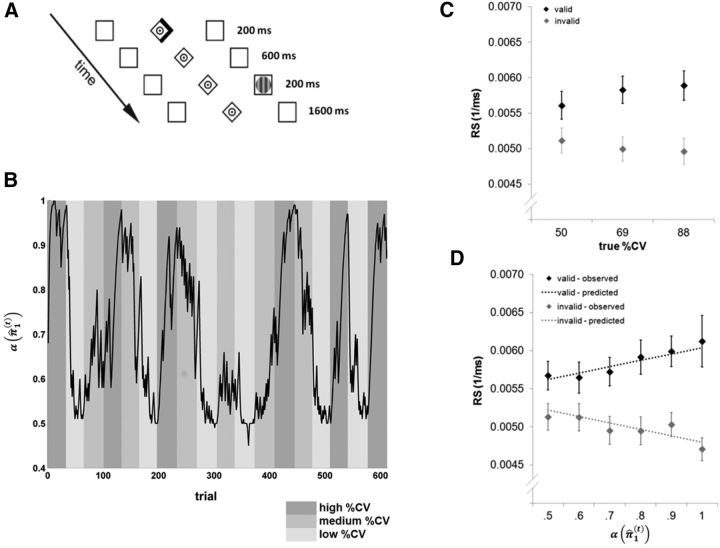Figure 1.
Experimental design and behavioral results. A, Exemplary illustration of a trial with a right, validly cued, target. In invalid trials, the target appeared at the location opposite to that cued. The subjects were instructed to maintain central fixation during the cue period and to make a saccade to the target stimulus as fast as possible. B, Trial-by-trial changes in precision-dependent attention α(π̂1(t)) that reflects the precision of the subject's belief that the target will appear at the cued location (black line) in relation to the experimentally manipulated cue validity (%CV, shaded areas). For this graph, α(π̂1(t)) was calculated on the basis of the average parameter estimates over all subjects. C, Mean RS for valid and invalid trials as a function of true (unknown) percentage of cue validity %CV. Error bars indicate SEM. D, Observed and predicted saccadic RSs as a function of precision-dependent attention α(π̂1(t)) derived from the hierarchical Bayesian learning scheme. For this graph, α(π̂1(t)) and predicted RS were calculated on the basis of group average values of the model parameters. Error bars indicate SEM.

